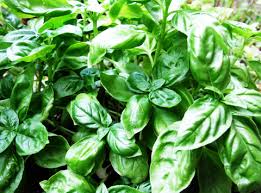If you’ve ever prepared a fresh salad or added basil to pasta, you probably know how irresistible its aroma can be. Now imagine your rabbit sniffing around the kitchen, twitching its nose at that same leafy bunch of basil. The question pops into your mind: “Can rabbits eat basil safely, or is it a no-go?”
You’re not alone. Rabbit owners often wonder which herbs and vegetables are safe. After all, bunnies have sensitive digestive systems, and even healthy-looking plants can sometimes be harmful. The good news is that basil is not only safe for rabbits but can also be a nutritious and enjoyable treat — if offered in the right way. Basil and Bunnies
In this guide, we’ll explore everything you need to know about basil and bunnies: the benefits, risks, feeding tips, portion guidelines, and even some creative ways to add basil to your rabbit’s diet. By the end, Basil and Bunnies you’ll have all the answers you need to confidently decide whether basil should make it into your bunny’s food bowl. Basil and Bunnies

What Is Basil, and Why Do People Feed It to Rabbits?
Basil (Ocimum basilicum) is an aromatic herb from the mint family. Basil and Bunnies It’s widely used in cooking for its fresh, slightly sweet flavor. There are many varieties — sweet basil, Thai basil, lemon basil, and purple basil — each with unique scents and tastes. Basil and Bunnies
For rabbits, basil is considered a safe, leafy herb that can add variety to their diet. It’s low in calories, high in vitamins, and provides natural antioxidants. Since rabbits thrive on fresh greens, basil can fit nicely alongside hay and other safe vegetables.
Nutritional Value of Basil for Rabbits
Basil offers more than just flavor. Here’s what it brings to the table:
-
Vitamin K – Supports blood clotting and bone health.
-
Vitamin A – Essential for vision, immunity, and skin.
-
Vitamin C – Helps with tissue repair and immunity.
-
Calcium – Important for bone strength (though too much can be an issue).
-
Antioxidants – Fight inflammation and support overall wellness.
-
Fiber – Aids digestion, though hay remains the primary fiber source.
So, while basil shouldn’t replace your rabbit’s main diet of hay, it can serve as a nutritious supplement.
Benefits of Feeding Basil to Rabbits
-
Diet Variety – Prevents boredom from eating the same greens daily.
-
Hydration Support – Like most leafy herbs, basil has high water content.
-
Natural Enrichment – The scent and taste stimulate your rabbit’s senses.
-
Digestive Health – A small boost of fiber aids gut function.
-
Bonding Opportunity – Hand-feeding basil can strengthen trust between you and your bunny.
Is Basil Safe for Rabbits? Addressing Common Concerns
Yes, basil is safe. However, there are a few important points to keep in mind:
-
Moderation matters: Too much basil can upset your rabbit’s stomach.
-
Calcium levels: While basil has some calcium, overfeeding may contribute to urinary issues.
-
Oxalates: Like spinach and parsley, basil contains oxalates. These aren’t harmful in small amounts but should be balanced with other greens.
In short, basil is safe — but it should be part of a rotating mix of herbs and vegetables, not a daily staple.
How to Feed Basil to Your Rabbit
Step 1: Choose Fresh, Organic Basil
Avoid basil that’s been sprayed with pesticides. Wash thoroughly before serving.
Step 2: Introduce Slowly
If your rabbit has never eaten basil, start with a small leaf or two. Monitor for any signs of digestive upset like loose stools or gas.
Step 3: Serve in Moderation
-
Portion size: A few sprigs (about 2–3 leaves) a couple of times per week.
-
Mix with other greens: Pair basil with safe veggies like romaine lettuce, cilantro, or dill.
Step 4: Avoid Dried Basil
Dried basil loses nutrients and may irritate the digestive system. Stick to fresh leaves.
Varieties of Basil: Which Are Best for Rabbits?
-
Sweet Basil (most common) – Safe and well-accepted.
-
Thai Basil – Also safe, but stronger in flavor. Introduce gradually.
-
Lemon Basil – Offers a citrusy twist; safe in small amounts.
-
Purple Basil – Nutritionally similar to sweet basil; rabbits can eat it.
All types are safe, but rabbits may have personal taste preferences.
Real-Life Example: Basil as a Treat
Imagine you’re preparing dinner and have leftover basil sprigs. Instead of tossing them, you wash them and offer a leaf to your rabbit. Your bunny sniffs, nibbles, and then eagerly eats the whole piece. By giving basil only as an occasional treat, you create a positive, enriching experience without disrupting their balanced diet.
Mistakes to Avoid When Feeding Basil to Rabbits
-
Overfeeding – Too much basil can lead to soft stools.
-
Relying on Basil as a Staple – Hay must remain 80–90% of the diet.
-
Skipping the Wash – Pesticides and dirt can harm rabbits.
-
Introducing Too Quickly – Always start small with new foods.
-
Serving Cooked Basil – Cooked or seasoned basil is unsafe for rabbits.
Comparisons: Basil vs. Other Herbs for Rabbits
-
Basil vs. Parsley – Parsley has higher oxalates, so basil may be the safer choice in rotation.
-
Basil vs. Mint – Both are aromatic and safe, but mint is stronger in flavor.
-
Basil vs. Cilantro – Cilantro is milder and often a rabbit favorite.
-
Basil vs. Spinach – Spinach should be fed sparingly due to oxalates; basil can be given a bit more freely.
Tips for Rabbit Owners: Getting the Balance Right
-
Offer basil as part of a weekly herb rotation with cilantro, mint, dill, and thyme.
-
Mix basil leaves into a salad-style bowl to encourage foraging.
-
Use basil as a training reward for recall or bonding.
-
Keep track of how your rabbit reacts — each bunny has a unique digestive system.
Industry Insights: Herbs and Rabbit Diet Trends
Many rabbit care experts emphasize diversity in fresh greens. Herbs like basil are gaining popularity because they add enrichment and nutrition without adding excess calories. Rescue centers and rabbit-focused vets often recommend rotating herbs weekly to mimic a natural, varied diet.
Some owners even grow indoor herb gardens to provide safe, pesticide-free basil and other herbs year-round.
Frequently Asked Questions About Basil and Rabbits
1. Can baby rabbits eat basil?
No, young rabbits under 12 weeks should not eat basil. Start introducing herbs after 12 weeks, in very small amounts.
2. Can rabbits eat basil stems?
Yes, the stems are safe, though some rabbits prefer only the leaves.
3. How often can I give basil to my rabbit?
A few sprigs, 2–3 times per week, is plenty.
4. Is basil better than lettuce for rabbits?
Basil is more nutrient-dense, but it should supplement — not replace — leafy greens like romaine or green leaf lettuce.
5. Can rabbits eat basil flowers?
Yes, basil flowers are safe and edible. Rabbits often enjoy them.
6. What if my rabbit doesn’t like basil?
That’s normal. Just try other herbs like dill, mint, or cilantro.
7. Can basil help with rabbit digestion?
Basil provides mild fiber, but hay remains the most important digestive aid.
8. Is too much basil dangerous?
Excess basil may cause diarrhea or gas. Balance is key.
Conclusion: Basil Is a Delight, but Not a Daily Dish
So, is basil a herbal delight for rabbits — or a no-go? The answer is clear: basil is safe, healthy, and enriching when fed in moderation. It adds flavor, variety, and nutrition, Basil and Bunnies while giving you another way to bond with your bunny.
Just remember the golden rule: hay is the foundation, greens are the supplement, Basil and Bunnies and herbs like basil are the treats that make life interesting. Basil and Bunnies If you approach basil with balance and awareness, Basil and Bunnies it can absolutely be part of your rabbit’s happy, healthy diet.
Next time you’re in the kitchen chopping herbs, go ahead and share a sprig or two with your rabbit. Their excited crunching will tell you all you need to know. Basil and Bunnies

